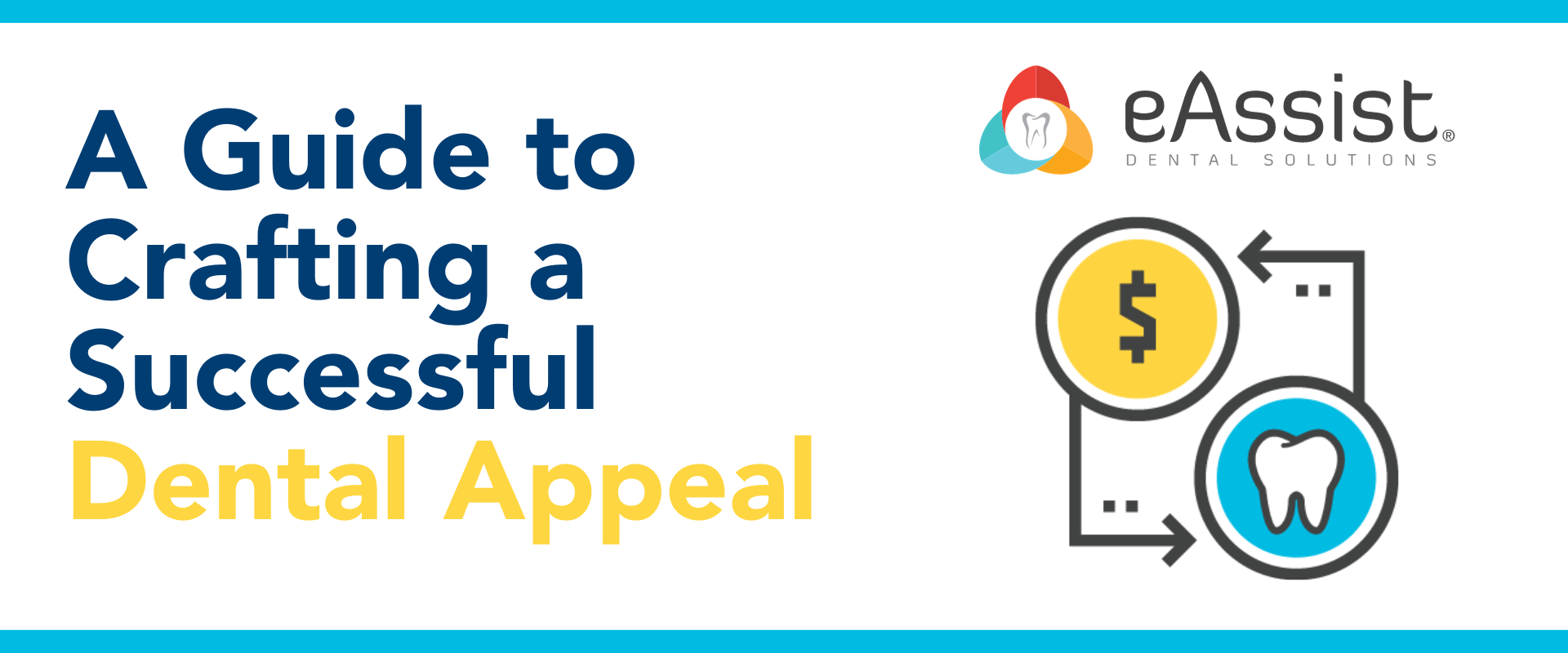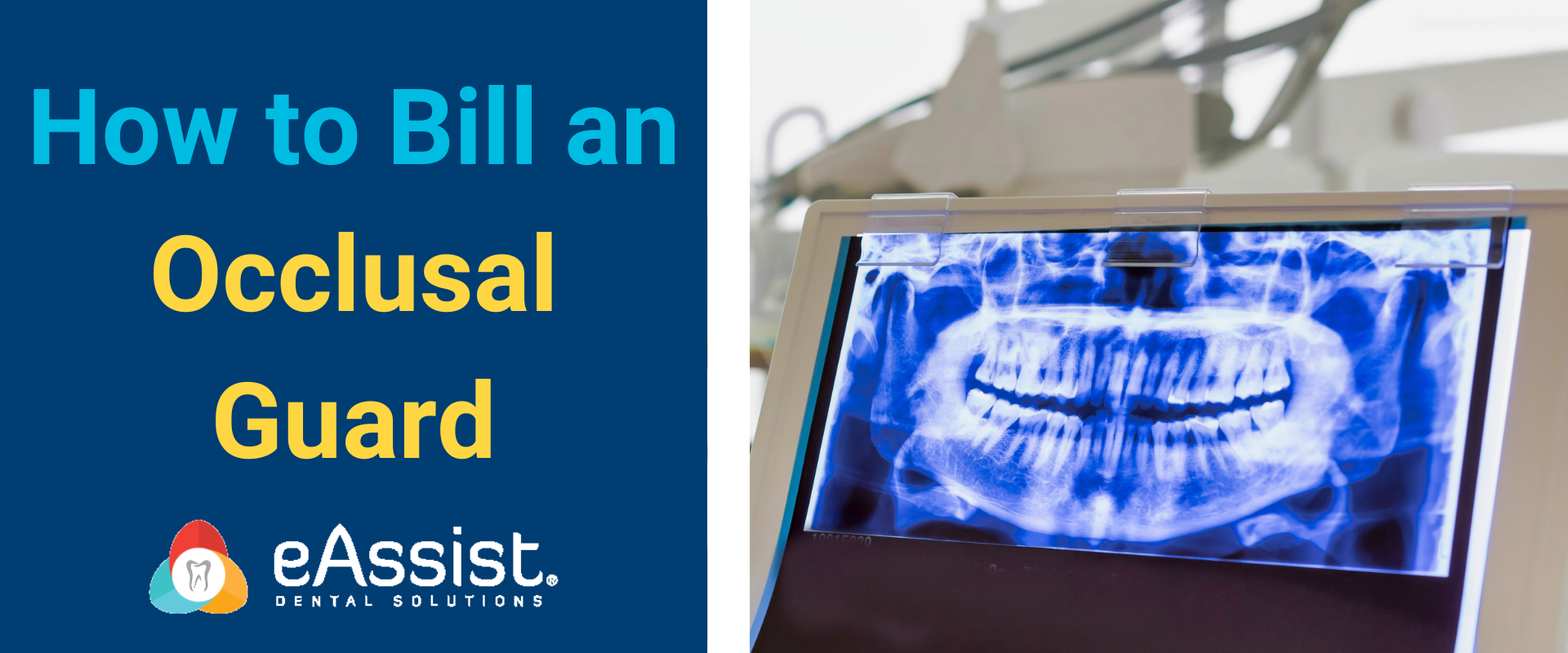In a perfect world, a claim would be sent to the insurance company, and soon after a payment would be received. However, there are many times that this doesn’t happen and instead, we receive a request for additional information or, even worse, a denial. While this can be discouraging, it doesn’t mean the claim is finished. Many denials can be appealed, in the following is a guide to crafting a successful dental appeal.
Reviewing the Denial
Once a denial is received the first thing to do is review it thoroughly. The insurance company must provide a reason why the treatment was denied and it should be clearly written on the documentation received. If not, contact the insurance company immediately for further clarification. There are many possible reasons why treatment has been denied and, once reviewed they should provide an insight into what to do next. If it’s an objective explanation, like “plan not effective on the date of service” or “waiting period not met” there’s no choice but to adjust and close the claim. If it’s a subjective reason like “criteria not met” or “denied due to necessity” the claim can, and should, be appealed.
Insurance Appeal Guidelines
Every insurance company handles dental appeals differently and each one has its own set of guidelines on how to submit them. You will usually find these details in the denial letter or EOB and it’s important that they are adhered to. Most carriers have a specific time frame in which appeals can be submitted and if it’s missed they will no longer consider them. Others have a frequency limit for appeal attempts and once that limit is reached their decision is final. Some allow them to be sent electronically while others require them to be sent to a specific appeals address via paper. Still, others have their own appeals form that needs to be completed. Before beginning the appeals process, review the plan guidelines in order to complete it correctly.

Doctor Narratives
An essential part of any dental appeal is the doctor’s narrative. This doesn’t mean the chart notes or even the initial narrative, as those have already been reviewed and denied. This must be a new, detailed narrative written by the doctor that thoroughly explains why the treatment was completed. Most of these narratives will be required because the treatment was initially denied for necessity. When this happens, the insurance is already leaning toward paying nothing for the treatment and it’s the doctor’s job to change their mind. They must keep this in mind when writing and think about what details would persuade the insurance company that the treatment was needed. Be as detailed as possible while remaining truthful and it should get the job done. Also, be sure not to put any emotion into the narrative. It can be frustrating when treatment is denied but airing out that frustration in an appeal will not help the treatment get paid.
Additional Attachments
In addition to a doctor’s narrative, it’s also important to include supporting documentation, such as x-rays and photos. Although they were most likely billed with the initial claim more focused examples will need to be sent with the dental appeal. For example, instead of a full panel, only send an enlarged x-ray of the affected area. If appealing a denied crown, an enlarged intra-oral photo or 3-D image, if available, would also be good. Also, have the doctor notate the x-ray highlighting the specific areas of decay or damage. If periodontal treatment is being reconsidered, also include the perio chart.

Further Appeals
Some insurance plans allow second and even third appeals and it’s up to the dentist to determine if they would like to continue the process. If they think the treatment should be covered, you can continue to pursue it, but, keep in mind, that a new, even more detailed narrative will be required for each appeal. In addition, the longer the claim goes unpaid the odds of the denial being overturned diminishes with every attempt. It’s something to consider when reviewing your accounts receivable, especially those aging over 90 days.
Uncommon Circumstances
The majority of appeals are in response to denials based on necessity but sometimes there can be less common circumstances in which they are required. For instance, the claim may be denied due to an insurance error and instead of providing a narrative and x-rays you will need to supply proof of the error. For example, if a claim was denied for timely filing but you have proof it was submitted within the correct time frame, simply mail the appeal with the proof and this should be enough for the insurance to reverse their decision.
Appealing claims can be a lengthy process, but it’s often essential to collect an insurance payment that is rightfully due. If you are struggling with keeping up with appeals, consider outsourcing. At eAssist, the Success Consultants who use our platform are highly experienced professionals who will complete all necessary requirements in order to get your appeals processed. To learn more, complete the form below.








0 Comments